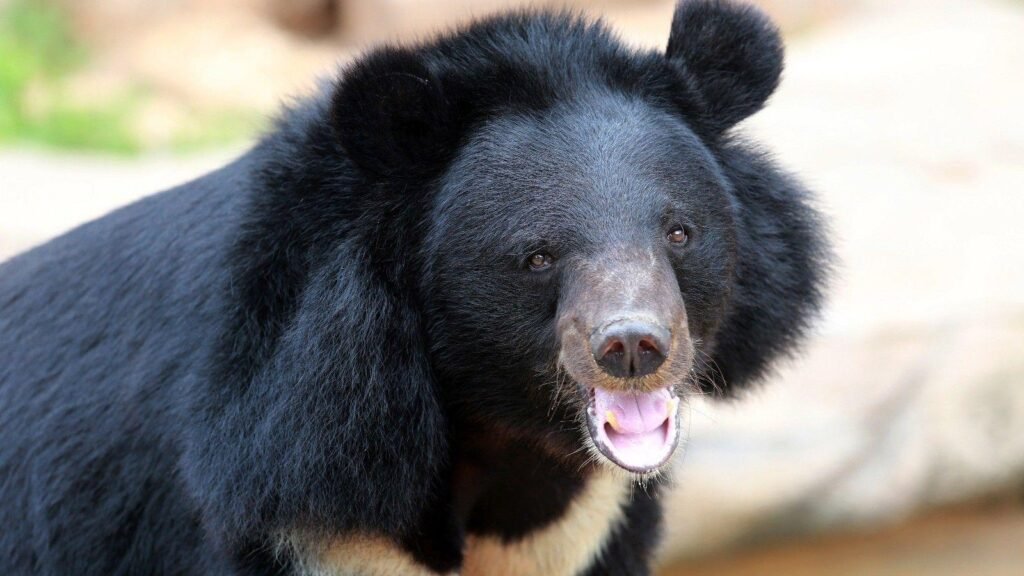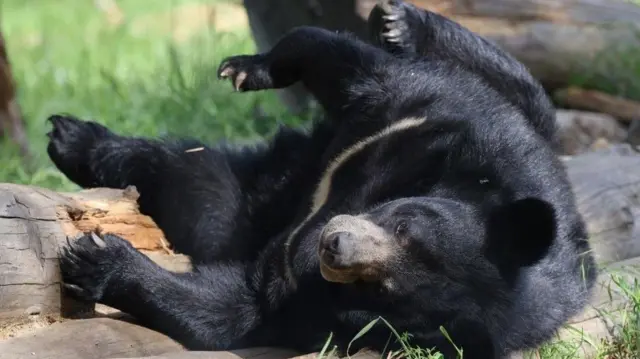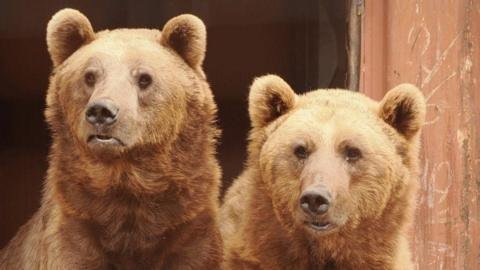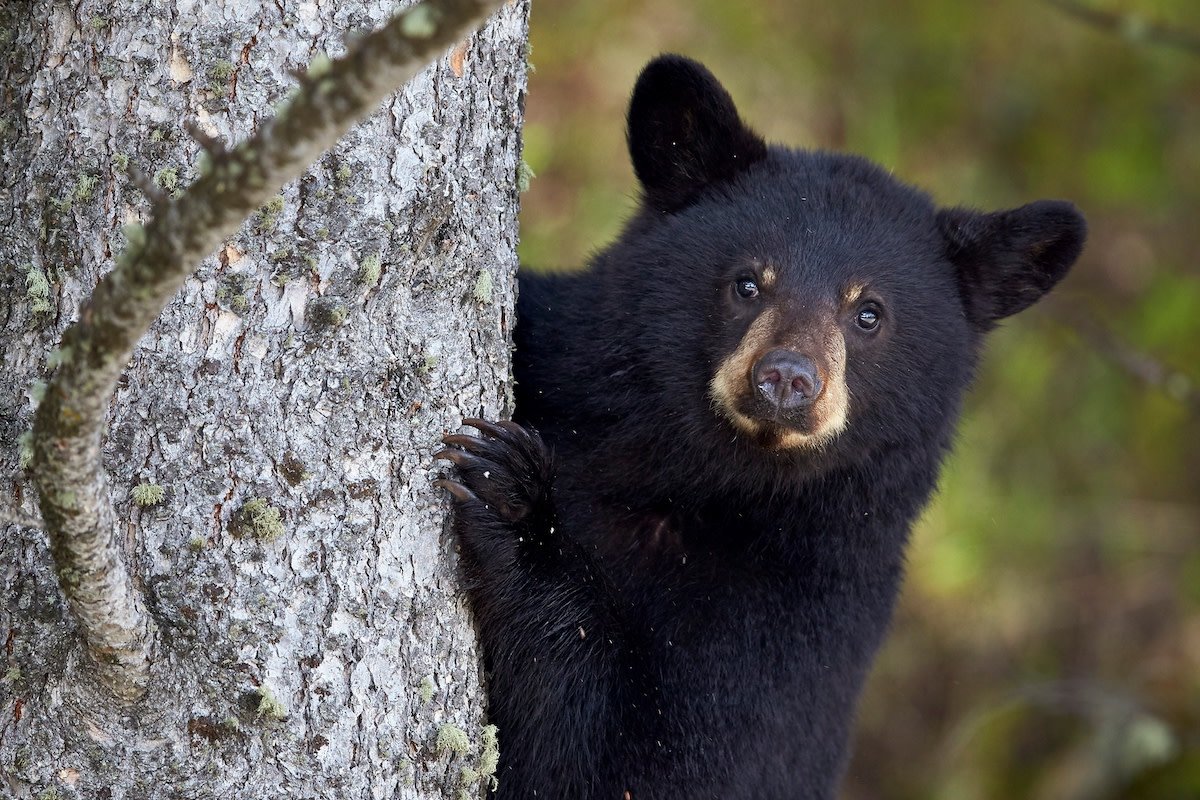The Arrival of Endangered Moon Bears in Wales
A remarkable milestone in wildlife conservation has taken place in the heart of Pembrokeshire, Wales. Four endangered moon bears arrive at a wildlife park for the first time, bringing hope and global attention to the fight against extinction. These Asian black bears—Martha, Irene, Gigi, and Coco—made their journey from France to Manor Wildlife Park in Tenby on 27 June 2025, where they now reside in a carefully designed, enriching habitat tailored to their natural instincts.

This momentous event reflects years of collaboration between breeding programmes, conservationists, and passionate animal welfare organizations. Furthermore, their arrival is more than just an addition to the park—it represents a renewed commitment to protecting one of Asia’s most vulnerable species.
Who Are the Endangered Moon Bears? Understanding Their Identity
Recognizing the Species
People call moon bears, also known as Asian black bears (Ursus thibetanus), by that name because of the distinctive crescent-shaped white markings on their chests. In addition, these medium-sized bears are native to forested regions across 18 countries in Asia, including China, Vietnam, India, and Japan.
Although moon bears display an adorable and playful demeanor, they now face a harsh reality—they are critically endangered. Consequently, their population continues to decline due to widespread habitat loss, illegal poaching, and the horrific practice of bile farming.
Why Are Endangered Moon Bears at Risk?
The species has long suffered from human exploitation. Experts estimate that more than 10,000 moon bears still live in confinement at bile farms, where workers keep them in cages and extract their bile painfully for use in traditional medicine.
Key Threats:
- Deforestation due to agriculture, infrastructure, and logging
- Poaching for body parts used in folk remedies
- Illegal wildlife trafficking
- Human-wildlife conflict in expanding rural areas
These challenges, compounded by limited breeding in the wild, make their conservation an urgent mission.
A New Home for Endangered Moon Bears at Tenby’s Manor Wildlife Park
When the four endangered moon bears arrived at the wildlife park, they were welcomed into a custom-built habitat, specifically designed to provide both physical and mental stimulation. The enclosure features:
- Natural climbing structures
- Water pools for bathing and cooling
- Hammocks and resting platforms
- Hidden feeders for foraging games
Anna Ryder Richardson, owner of Manor Wildlife Park, expressed deep joy at their arrival. “These charismatic creatures, with their striking crescent-shaped chest markings and playful personalities, have already stolen the hearts of our team,” she said.
She added that welcoming the bears marks a bold new direction for the park’s conservation strategy.
How the Wildlife Park Supports Global Conservation Efforts
The park is not working alone. This initiative is part of an international breeding programme, linking wildlife institutions across Europe and Asia with the shared mission to eliminate cruelty and preserve endangered species.
Collaboration with Free the Bears
The well-known charity Free the Bears, which has rescued over 1,000 black bears across Asia, worked closely with Manor Wildlife Park to make this transfer possible. Founded in 1995, the organization has grown to become a leading advocate for bear welfare, operating sanctuaries in Laos, Cambodia, and Vietnam.

Matt Hunt, the charity’s CEO, praised the collaboration, saying:
“Despite the enormous challenges, we remain committed to protecting, preserving, and enriching the lives of bears worldwide—alongside dedicated partners like Manor Wildlife Park.”
Endangered Moon Bears: Physical Traits and Lifespan
To better understand and appreciate these creatures, here are some key facts about the Asian black bear:
- Weight: Adult females range between 65kg (143lb) and 90kg (198lb)
- Lifespan: Typically up to 25 years in captivity
- Distinctive marks: V-shaped white chest marking and chin patch
- Diet: Omnivorous—includes fruit, nuts, insects, and small animals
Nevertheless, despite their potential size, moon bears are well known for their gentle temperament and remarkable intelligence.
Meet the Endangered Moon Bears: Martha, Irene, Gigi, and Coco
Each of the four moon bears has a unique personality. Although their backstories remain private—due to their origin in a French zoo that participates in the same breeding programme—early observations by keepers suggest the following
- Martha enjoys spending time in the pool and appears to be the most curious.
- Irene prefers climbing and often explores the highest points of the enclosure.
- Gigi is more reserved but loves foraging for treats hidden around the habitat.
- Coco has already been seen relaxing in the hammock—her favorite new spot.
Their adjustment to the new home is being carefully monitored, with keepers using positive reinforcement training to build trust.
A World-First Habitat Feature: The Tunnel System
In a move that underscores innovation and commitment to enrichment, Manor Wildlife Park is creating a “world-first” tunnel system that links the moon bear habitat with those of the park’s tigers. This design allows:

- Species rotation for enrichment
- Sensory stimulation through smell and sight
- Safe swapping of habitats without animal stress
Anna Ryder Richardson explained, “This will let both species experience new sights and smells, enhancing their quality of life in captivity. It’s all about emotional and mental enrichment.”
The Bigger Picture: Conservation Beyond Borders
The arrival of these endangered moon bears is part of a larger global strategy that includes:
- Public awareness campaigns against bile farming
- Wildlife enforcement training for rangers and officials
- Cross-border animal rescue missions
- International legislation lobbying
By welcoming the bears, Manor Wildlife Park contributes not just to their care but to the symbolic dismantling of wildlife exploitation.
Education and Visitor Engagement
Visitors are encouraged not just to view the bears but to learn about their plight. Educational signage, scheduled talks, and interactive zones will give families insight into:
- The lives of moon bears in the wild
- The dangers of illegal wildlife trade
- How visitors can support bear conservation globally
This immersive approach transforms tourism into activism.
What’s Next for the Wildlife Park?
Alongside the moon bear programme, the park is expanding its conservation initiatives with the arrival of:
- Red pandas, a similarly endangered species
- Tigers, integrated into the rotating tunnel enrichment system
- New habitat enhancements for primates and small mammals
These developments form part of the park’s long-term vision to become a center for education, rescue, and international collaboration.
Public Response and Community Support
The arrival of the moon bears has sparked widespread excitement and emotional response from the local community and wildlife enthusiasts across the UK. Early visitors have expressed awe at seeing these rare animals in such a naturalistic environment.
Social media posts, shares, and media coverage have helped spread awareness about the park’s mission and the larger fight to end bile farming.
The Role of Ethical Zoos in Conservation
As zoos evolve from entertainment hubs to ethical conservation centers, Manor Wildlife Park stands out as a model. The emphasis on animal welfare, enrichment, and global partnerships sets a high standard for other institutions.

By providing sanctuary and purpose for animals like the moon bear, they demonstrate that responsible wildlife tourism can serve a higher cause.
A Symbol of Hope for Endangered Species
The fact that four endangered moon bears arrived at a wildlife park in Wales is more than a headline—it’s a hopeful symbol of what’s possible when compassion, science, and cooperation come together. These bears are not just survivors of a cruel system; they are now ambassadors for their species.
With continued support from the public, conservationists, and partner organizations like Free the Bears, the dream of a world where no bear suffers in captivity for profit is no longer far-fetched.





There is definately a lot to find out about this subject. I like all the points you made
Çağra LTD | Mutfak ürünleri | Bahçe aksesuar Kıbrıs mutfak gereçleri, hırdavat kıbrıs, kıbrıs hırdavat, matkap kıbrıs, kıbrıs inşaat ürünleri, kıbrıs mobilya
Kıbrıs Kariyer | Kıbrıs iş ara kıbrıs kariyer, iş bulmak kıbrıs, kıbrıs işveren, kıbrıs asgari ücret
Dijital Ajans | Deluxe Bilişim seo hizmeti,sosyal medya ajansı,kurumsal seo hizmeti,yazılım desteği, wordpress site kurulumu, eticaret site kurulumu,,sosyal medya ajans
This is really interesting, You’re a very skilled blogger. I’ve joined your feed and look forward to seeking more of your magnificent post. Also, I’ve shared your site in my social networks!
Dxd Global | Development dxd global, global dxd, deluxe bilisim, deluxe global, IT solutions, web developer, worpress global, wordpress setup
This is really interesting, You’re a very skilled blogger. I’ve joined your feed and look forward to seeking more of your magnificent post. Also, I’ve shared your site in my social networks!
becem travel | Kıbrıs araç transfer Kıbrıs araç kiralama , Kıbrıs vip araç , Kıbrıs araç transfer , Kıbrıs güvenli ulaşım